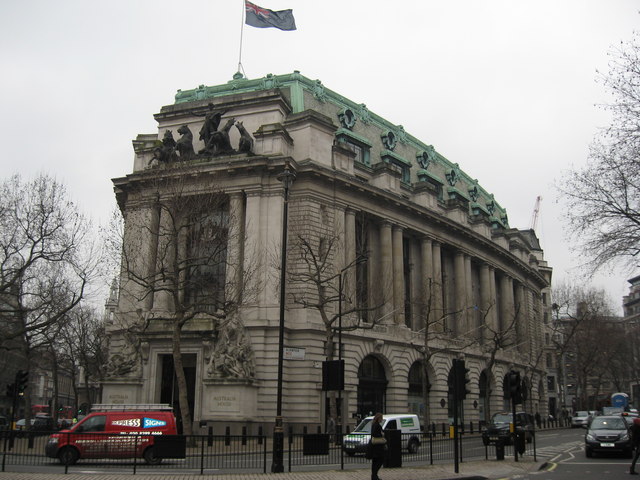Open diplomacy? New embassies and old on the Thames
Carl Bridge , Eileen Chanin |
The new United States embassy in London has just opened a little back from the south bank of the Thames near the old Battersea power station at Nine Elms. At a cost of a billion US dollars it is designed as a fortress to resist terrorists. It has a moat a hundred feet wide and eight feet deep at its front and a high wall at its back. Shaped like a crystalline cube, it is made of bomb-proof glass and has an outer frame of plastic polymer baffles to make it ecologically sound. It will also pay for itself as it is located on a brown-fields site and the sale of the old embassy in plush Mayfair will bring in a pretty penny.
Ambassador Woody Johnson says the new embassy building’s glowing transparency will characterise the American approach to post-Brexit Britain. But this new high-tech blockhouse, like the increasingly protectionist and islamophobic Trump administration, looks in on itself, hardly suggesting an easy welcome to the public or a site for practising open diplomacy.
A hundred years ago the granite blocks for a very different embassy building were fashioned at a stonemason’s yard also at Nine Elms. Built entirely of Australian materials by British craftspeople to a British design, Australia House opened for business on the Strand in the closing months of the first world war. It, too, was on a cheap, reclaimed site, in its case a slum clearance. And it was also designed to pay for itself, but by a very different mechanism.

Not having a previous property to sell, the Australian government in 1913 planned the new building in such a way that it would help generate its own construction and running costs. Australia House was designed with an open commercial arcade of street-front shops all around its base and with an exhibition hall and rentable offices for Australian firms inside. Its message was that Australia was open for business.
Australia’s House, the most expensive building newly federated Australia had commissioned, was to be a magnet to raise investment capital and to attract immigrants. It was also a superbly designed emporium for the display and sale of Australian products. Situated on the main artery between civil service Whitehall and the commercial City of London, it would fulfil its multiple functions with ease.
Imperial London was the world’s greatest marketplace, free trading and with global reach. The open-ness of Australia House is more muted these days given the terrorist threat. The outer arcade is filled in and there are tiger-trap entrances at the doors. But what is today the oldest continuously occupied embassy building in Britain still houses most of the various states’ investment and trade offices, the tourist commission, wine board, and other key instruments of Australia’s outreach.
One might wonder whether after a century of Australia House’s use, which of the two embassy buildings is the more fit for open diplomacy and trading with a post-Brexit Britain which of pressing economic necessity needs to reconnect with the wider world.
Please note: Views expressed are those of the author.